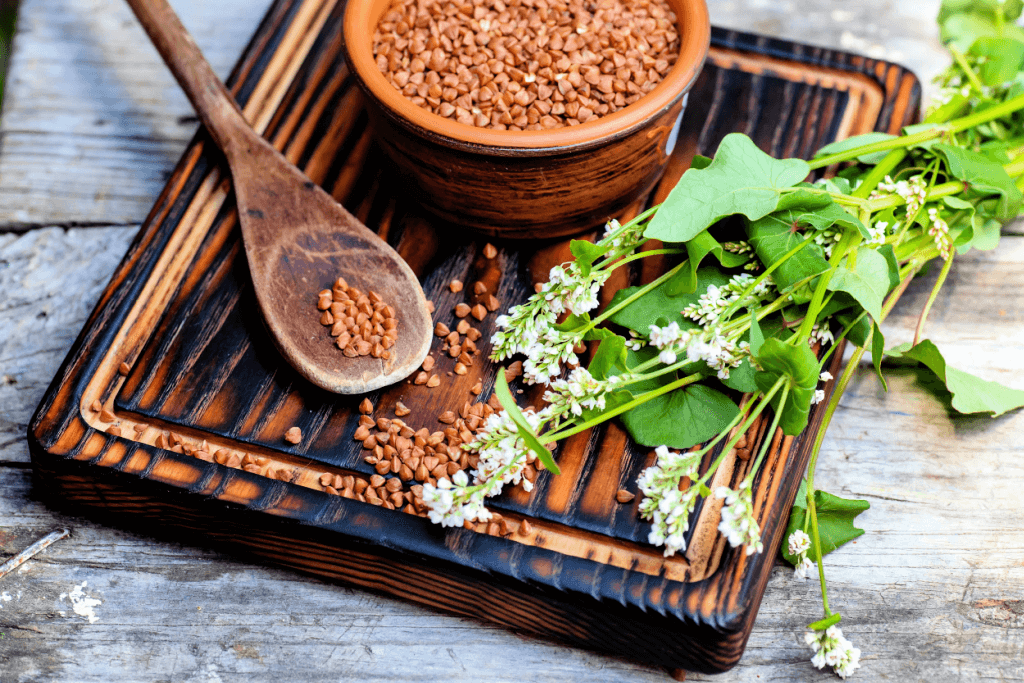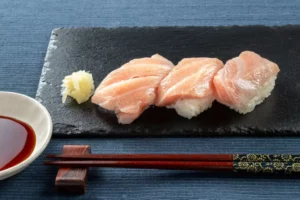Buckwheat is often overshadowed by wheat and rice. Yet, its unassuming appearance belies a treasure trove of health benefits and a unique, nutty flavor that can transform ordinary dishes into extraordinary culinary experiences. Join us on a journey to uncover the secrets of this humble yet extraordinary grain, and you’ll never look at your pantry staples the same way again.
Table of Contents
ToggleWhen did people start cultivating buckwheat in Japan?
People initially cultivated buckwheat in China and brought it to Japan in ancient times. It’s believed that the introduction of buckwheat to Japan occurred during the Jomon Era, which spanned from approximately 10,000 to 300 BC. Japan likely adopted this vital crop through cultural and trade exchanges with neighboring regions, including China and Korea.
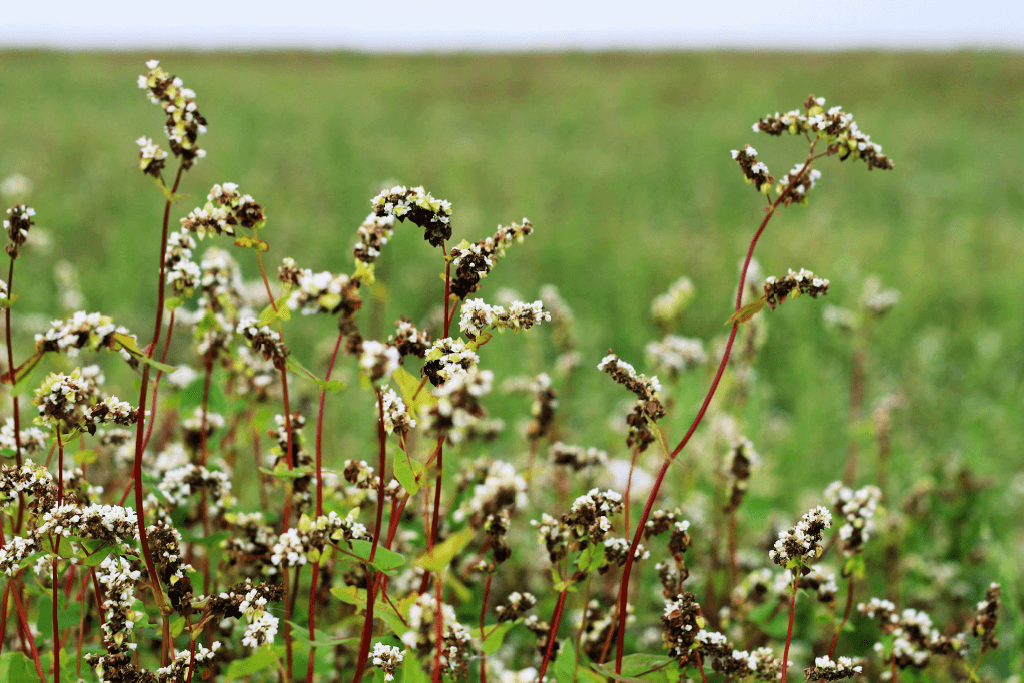
Buckwheat’s cultivation in Japan during the Jomon Era marked the beginning of its long history in the country. Over time, buckwheat became a staple crop in Japanese agriculture, and its versatile uses in the kitchen led to the development of iconic Japanese dishes like soba noodles. Today, buckwheat remains an integral part of Japanese cuisine and culture, with soba noodles being a beloved and enduring culinary tradition.
Does buckwheat only grow in Japan?
No, buckwheat does not only grow in Japan. While buckwheat is a significant crop in Japan and is often associated with Japanese cuisine (particularly in dishes like soba noodles), it is not exclusive to Japan. Buckwheat is a versatile and hardy plant that can be cultivated in various regions worldwide. This crop grows in many countries, including the United States, Canada, Russia, China, France, etc. It is a cool-season crop that can thrive in different climates and soil types. This adaptability has made it a popular choice for farmers in various parts of the world.
Are you interested in enjoying even more delicious snacks with buckwheat? Check out Sakuraco! Sakuraco delivers traditional Japanese snacks, teas, sweets, and snacks from local Japanese makers directly to your door so you can enjoy the latest treats directly from Japan!
What are the most common soba dishes?
Soba noodles
Soba noodles are thin, long noodles made from buckwheat flour. These noodles are integral to Japanese cuisine because of their distinct flavor and texture. People have relished these noodles for centuries, with various types, each having its own method of preparation and presentation.
One of these variations is zaru soba, a tasty summer dish. People cook the noodles until firm, then cool them under cold water to maintain their springiness. Typically, serve them cold on a bamboo tray known as “zaru.” Next, they dip them into soy sauce, mirin (sweet rice wine), and dashi (a savory broth). Top zaru soba with green onions, grated daikon radish, and seaweed.
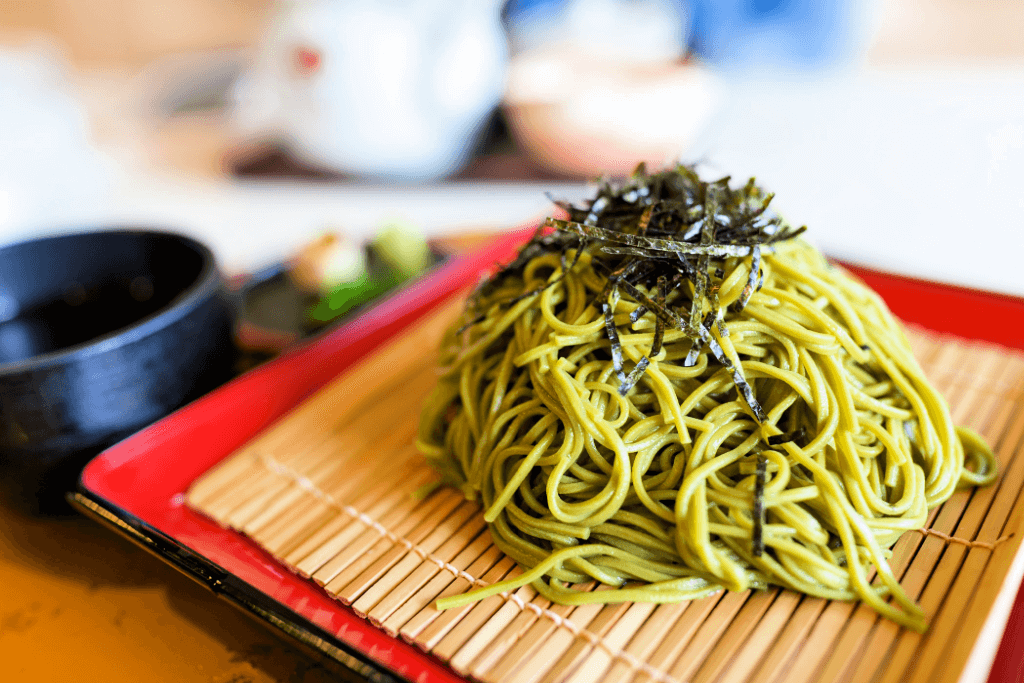
Next, we have cha soba, or “green tea soba,” made by adding powdered green tea (matcha) to the dough. This gives the noodles a green color and a mild, earthy taste. Cha soba can be eaten hot or cold and is usually served with a similar dipping sauce to zaru soba. People who want to try something different from regular soba noodles can enjoy cha soba’s unique color and taste.
Finally, kitsune soba is a warm, comforting dish of hot soba noodles and aburaage tofu pouches in a flavorful broth. The broth is usually made with soy sauce, mirin, and dashi. The tofu pouches soak up the sweet and savory flavors of the broth. The name “kitsune” means “fox” in Japanese folklore, and according to legend, foxes like aburaage!

Soba noodles are not only delicious but also a part of Japanese tradition and culture. Whether served cold, with green tea, or with tasty tofu, soba noodles continue to be loved by people in Japan and worldwide.
Soba cha (Buckwheat tea)
Soba cha, also known as buckwheat tea, is a traditional Japanese drink with a unique taste and a rich history. Even though it’s called “tea,” it’s not like green or black tea because it doesn’t come from a leaf. Instead, it’s made from roasted buckwheat kernels, which gives it a unique and nutty flavor.
To make soba cha, they first roast the buckwheat kernels until they become a deep, reddish-brown color. This roasting process makes the tea taste better and gives it a rich aroma like wheat. After roasting, they grind the kernels into small pieces or a fine powder, depending on how people like it.
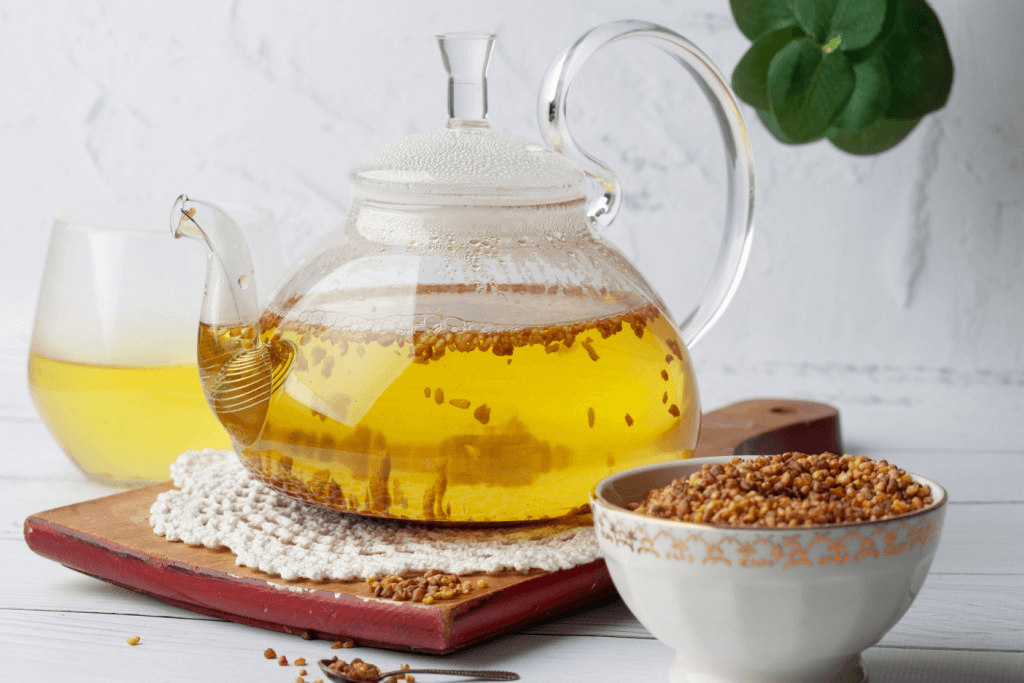
The flavor of soba cha is often described as toasty, nutty, and a bit sweet, with a hint of earthiness. This warm and comforting taste makes it popular in Japan, especially during colder times. You can enjoy it either hot or cold, depending on your preference.
Soba boro (Buckwheat cookies)
Japanese sweets enthusiasts hold a special affection for soba boro, also known as buckwheat cookies, appreciating their distinct appeal. These petite, circular cookies primarily feature buckwheat flour among their straightforward ingredients. To create soba boro, they mix buckwheat flour with sugar and water to form a dough. They shape this dough into small, bite-sized rounds and bake it until it transforms into delicate, mildly sweet cookies with a satisfying crunch.
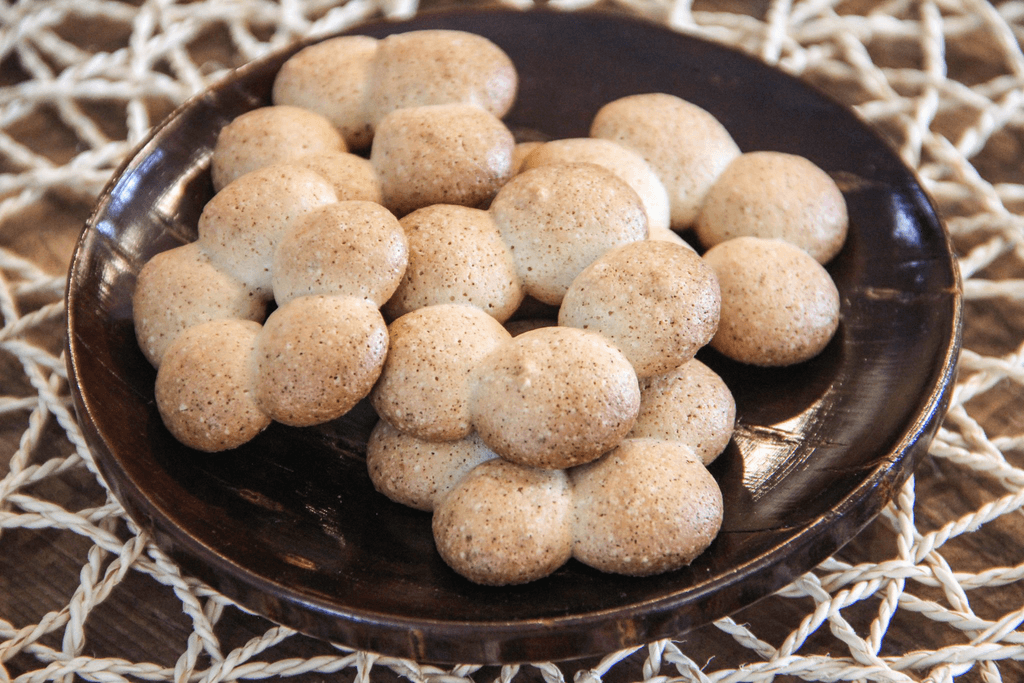
The taste of soba boro is subtly nutty and earthy, with a gentle sweetness that doesn’t overwhelm your taste buds. This blend of buckwheat’s natural flavor and the sweetness of sugar creates a balanced and delicate taste, often bringing to mind a sense of rustic simplicity. It’s common to serve soba boro alongside a cup of green tea, enriching the whole experience with its unique flavor and texture. Additionally, soba boro is a well-liked choice as souvenirs and gifts, symbolizing warm hospitality.
Why should I eat buckwheat?
Buckwheat, a highly nutritious whole grain, comes with various health perks. It’s packed with complex carbohydrates, dietary fiber, high-quality protein, and essential minerals like magnesium, manganese, phosphorus, and vitamins. Not to mention, it’s naturally gluten-free, making it a fantastic choice for those with celiac disease or gluten sensitivities. In the kitchen, buckwheat is your versatile buddy, adding its unique nutty flavor and hearty texture to dishes like soba noodles, pancakes, and baked goods. All in all, his distinct, earthy taste enhances savory and sweet recipes, making it a kitchen superhero in worldwide cuisines.

Additionally, buckwheat may bring some health benefits, thanks to antioxidants like rutin, which can boost heart health and fight inflammation. With a rich global culinary history, buckwheat is a sustainable crop with minimal water and pesticides, making it eco-friendly. So, how about giving buckwheat a try in your next meal? It introduces new flavors and textures while potentially boosting your health – a win-win for your taste buds and well-being. What are your thoughts on buckwheat? Leave a comment below!


